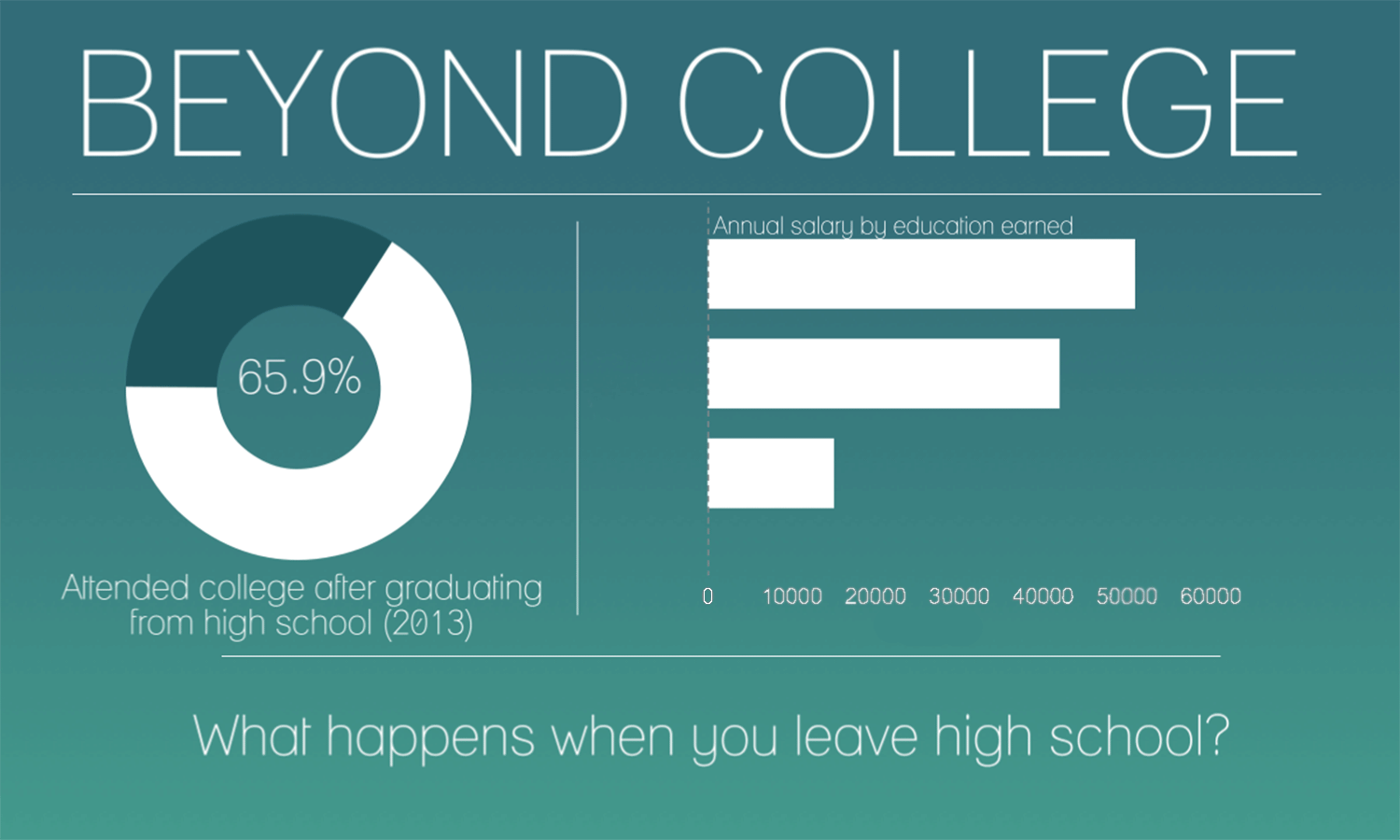Every Thursday, teachers “Talk about college Thursday.” They wear their college shirts. They talk about their college days. Administrators announce and share stories of their college experiences. Students hear about the great benefits of college.
But college is not the only option.
In 2013, 65.9 percent of high school graduates attended college, and 27.8 percent went into the labor force. The percentages rose from the previous year during which only 62 percent of high school graduates attended college. Even though the expectations for students include attending college, Assistant Principal Leonard Cousins says more options exist after high school than just college.
“We try to get students ready for college because we want them to have that option to be able to go to college,” Mr. Cousins said. “We would rather students have the knowledge they need than not to prepare them and them want to go but not be prepared.”
Mr. James Richardson, Coach Michael Keel’s stepbrother, felt it would be better to start in the industry and earn money rather than spend money for an education. Richardson worked as a pipefitter in an oilfield for five years. From that point, he went into supervision and then moved into planning and scheduling roles with Exxon.
“I know that, depending on the field of study, people were walking away with a four-year degree with massive amounts of student debt,” Mr. Richardson said.
Trade schools present an alternative to the traditional college experience. They cost about $40,000, and students graduate in two years rather than four.
Legacy’s curriculum focuses on college readiness for college-bound students. At different times during the year, the school hosts days for colleges to come and visit with the students. Participants can gain information about different colleges. Legacy also offers different classes to students that prepare them for standardized tests such as the SAT and ACT. Juniors and seniors can use two college visit days per year that do not count against their attendance record. Dr. Shelly Butler feels her job and the job of Legacy’s educators prepares everyone for college, but she realizes not everyone will attend a university.
“It is not my job to pre-select people for college but to prepare everyone for the opportunity,” Dr. Butler said.
Loans can relieve some of the financial stress during college, but students must pay the loan back (with interest) after they graduate. Coach Brandy Crawford works with students to prepare them for college and gives them financial advice.
“My advice is to only take out the loans if you absolutely need it,” Coach Crawford said. “Scholarships and grants should be the first options.”
Each year about 180,000 men and women enlist in the military. For students who don’t think they are meant for college the military presents another option. Senior Luke Lee attended military boot camp and plans on going straight into the military after graduation.
“This was always the plan,” Lee said. “To be apart of the military, you have to have something to live for. For me, that is my niece and nephew. I want them to be able to grow up in a free country like I did.”
For students who choose not to go to higher education, they still have the ability to find a good job. Jobs that make a substantial living without the cost of a university education include welding, dental hygiene and oil field work. A student who graduates with a bachelor’s degree will make on average $51,000 a year versus the $42,000 made by person who went to trade school. Nonetheless, it releases young adults into the workforce earlier with half the cost of attending a university.
“There are so many options for students today and it is our job to prepare the kids for those options,” Mr. Cousins said.
(Featured image by Ben Townsend)




